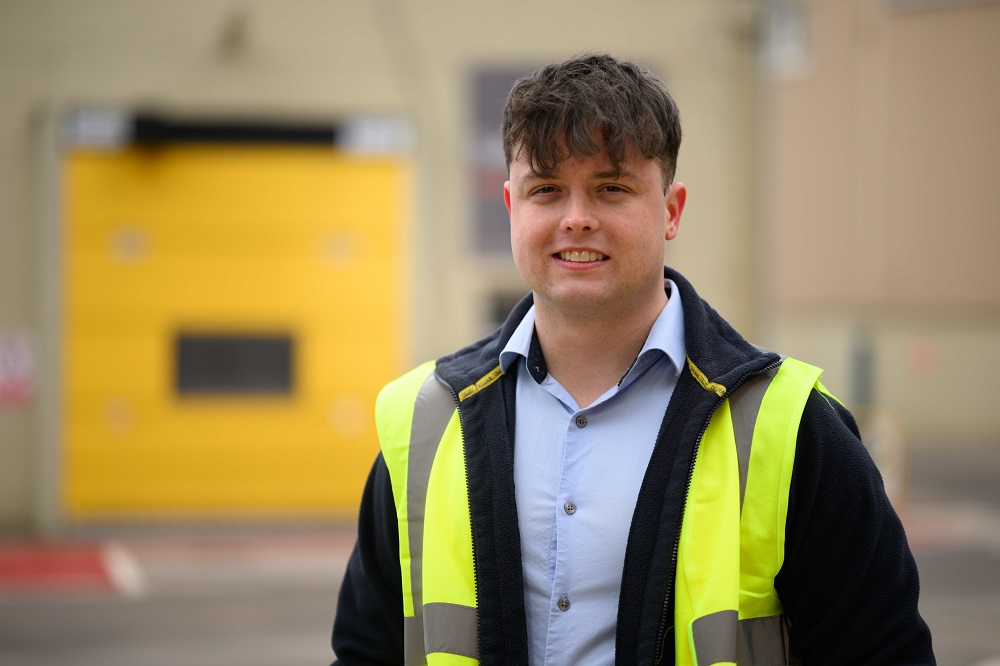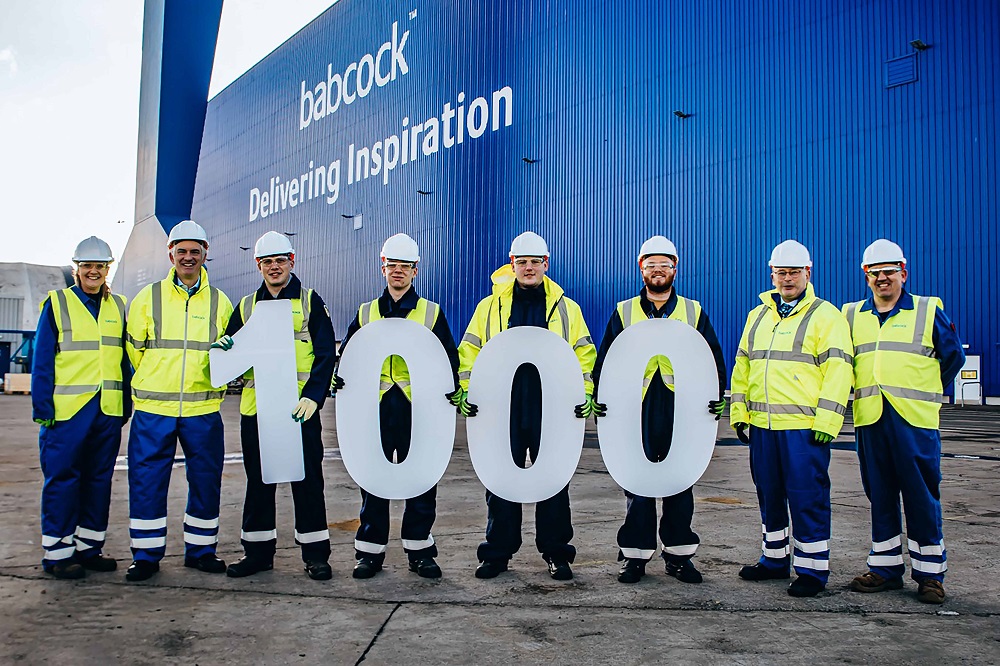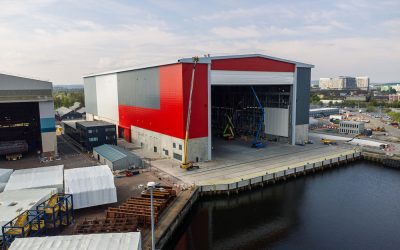“You’re coming straight into a job that is well paid, and well supported,” says Charlie Nunn, an engineering technician at BAE Systems. “You’re supported going through professional registration, your degree, you’ve got a career path to follow and you’re more or less guaranteed a full-time job at the end of it if you be yourself kind of thing. So yes, I think it’s brilliant,” the 24-year-old who recently completed her apprenticeship with the company tells The Naval Architect.
In the ever-evolving landscape of naval architecture and engineering, innovation and investment in new talent is a key driver of progress. Most companies recognise that fostering expertise helps to shape the future. Nurturing young talent should therefore be paramount. Recognising this need, companies across the UK have established schemes to develop and support early career naval architects and engineers.
Two of the UK’s major players in defence, Babcock and BAE Systems, have both established robust apprenticeship programmes to support the development of aspiring professionals. Both companies have key contracts to support the Royal Navy. It was announced recently that Babcock will be refitting the Royal Navy submarine HMS Victorious in a contract that was agreed with the UK’s Submarine Delivery Agency worth an estimated £560 million.
Elsewhere, the company also aims to create over 1000 extra jobs at its Rosyth facility in Scotland, including an extra 400 apprenticeships, to be recruited over a four-year period. The roles will support key programmes like the new Type 31 frigate build programme.
Meanwhile BAE Systems has also begun a significant expansion of its shipyards, including a state-of-the-art facility to support the construction of Type 26 Frigates which will support 100s of new jobs.
Alongside this the company plans to expand its training facilities with a new applied shipbuilding academy at BAE Systems’ Scotstoun shipyard on the banks of the River Clyde in Glasgow. The academy will comprise a new trade hall and learning hub with more than 30 classrooms and a STEM innovation lab. Through it the company aims to provide training for almost 4,500 employees, including 700 apprentices.
The firm plans to double its intake of apprentices to more than 200 each year at its Glasgow site alone. There are currently 201 apprentices at BAE Systems in Scotland, spread across the company’s Maritime Services division in Hillend and working with the Naval Ships division in Glasgow.
“The Engineering Technical Apprentice (ETA) scheme is a great introduction to the business and the industry, allowing us to now take ETAs into the Naval Architecture discipline and develop their careers in various areas of the discipline,” says Stuart Hunt, who is BAE Systems head of Discipline Naval Architecture at the company’s Naval Ships division and is based in Glasgow.
“A new career pathway has been developed to facilitate this and also support part-time studying to gain academic qualifications. We also support development through the different levels of professional registration as careers progress,” Hunt adds.
Babcock is also planning new investments to build up education and training. The company plans to expand its skills academy in tandem with the new contract for HMS Victorious, which it is estimated will sustain a further 1000 jobs in Southwest England. The new academy in Plymouth will allow individuals the opportunity to focus on submarine support and develop expertise required to perform deep submarine maintenance.
Early career naval architects Sebastian Ford and Benjamin Harrison have both benefitted from the company’s apprenticeship scheme. Harrison completed a higher-level naval architect apprenticeship from September 2017 to October 2021. “I was lucky enough to get an assistant engineer role. So I’ve been fortunate enough to get funding now to top up my foundation degree to a full degree alongside my work,” he says. He has worked in a development role in the Naval Architect Design Group (NADG) since completing the apprenticeship.
Sebastian Ford is currently a higher-level naval architect apprentice with Babcock. “I’m 21 and I wasn’t too sure what I really wanted to do when I started,” he says. “With this programme you get to bounce around various placements and try different things to see what you enjoy the most. Everything sounds really good from looking at it, but you never know until you try it. So it was a really good opportunity to find what works best.”
“In your first year you start right from the fundamentals,” adds Ford. “You’re hands-on using tools in the dockyard. Then you gradually branch out and develop so you can get a bit of experience everywhere so you know what kind of you know area you want to come out in. I found that really useful to be able to get a bit of experience everywhere to help guide my career.”
Gareth Kenward, the Early Careers manager for Babcock’s Devonport site, provides insights into the broader context of apprenticeships within Babcock and the maritime industry: “It’s great that we’ve got such a large early careers programme where we can bring people into the organisation, to teach them what we need them to do from our job role perspective.”
He emphasises the importance of apprenticeships in addressing the growing demand for skilled workforce while also addressing the aging workforce within the industry. Highlighting the value of apprenticeships in providing a pathway for individuals to gain qualifications and skills without accruing substantial student debt.
Kenward states that having a workforce that’s trained to an expert professional is of utmost importance. “Apprenticeships allow us to bring in a workforce with up-to-date current skills, but then to keep them trained with new skills that come along is absolutely of paramount importance for us. That’s what allows us to meet the needs of our customers, so it can’t be understated basically,” he notes.
The programme allows Ford and Harrison to gradually develop their expertise through practical experiences and exposure to various departments within Babcock. Additionally, they highlight the importance of communication, teamwork, resilience, and curiosity as essential traits for success in their roles.
Working and studying with Babcock made sense for Ford as he is local to the company’s Devonport site. “I’m just across the river into Cornwall from Devonport. So not too far and I also know people within Babcock already so I was hearing good things about it. It’s also an international company that’s well recognised. I saw that I could get good qualifications through there which everyone recognises,” Ford says.
After school both Ford and Harrison realised that university wasn’t the right path for them. Their interest in practical learning and hands-on experiences, particularly sailing and marine engineering, was key to this decision.
For Harrison, the hands-on aspect of the programme was a key motivator as he wasn’t interested in an academic qualification at university following his studies at school. “I wanted to do an apprenticeship rather than university because I really like the idea of the practical side of things. I find that helps really embed the knowledge you’re taking in while studying,” he says. “Of course it works vice versa as well. You can apply a study to your work, so I thought it was really good to do an apprenticeship.”
The experiences of both Ford and Harrison underscore the importance of apprenticeships in providing opportunities for individuals to enter and excel in the field of naval architecture and engineering, regardless of their background or prior experience.
BAE Systems is already a well-established education and training provider. For Charlie Nunn, it was her interest in shipbuilding that led her to choose the apprenticeship route for the hands-on experience in the industry. Her apprenticeship included a year in college and three years of part-time work in the office with placements in various sections of the company.
“I think for me, in school it very much felt that you’ve got to be intelligent go to university, but that’s just not the be all and end all. Now I think apprenticeships are amazing for getting your foot in the door, getting you that industry experience straight up. It kind of gives you an edge that people straight out of school don’t have. Obviously degrees are brilliant but it is not the be all and end all and don’t let it put you off that you’re not getting a degree straight off the bat,” she says.

Martin Conroy, engineering technician apprentice, BAE Systems Naval Ships
Martin Conroy, an engineering technician apprentice, is in his fourth year and currently involved in the Hunter class dig programme. He initially planned to pursue higher education but was drawn to the apprenticeship scheme after a presentation at his school. Conroy highlights the support provided by BAE during the onboarding process, despite challenges posed by the Covid-19 pandemic. “I worked through my classes using remote learning, but still managed to keep on top of the workshops that we had to do in person and that was good as well. From then on I did rotational placements around different teams in the business,” he says.
Nunn has recently completed her apprenticeship and is now studying Engineering, Design and Manufacture at the University of Strathclyde as part of the Graduate Apprenticeship while also working in the Weights team on the CSC (Canadian Surface Combatant) Project as an engineering technician. Both she and Conroy highlight the diverse learning opportunities and rotations across different teams within the company, as well as the close links to the industry provided by BAE Systems.
“On an apprenticeship you’re getting paid and you’re in the exact same industry you’ll end up applying for. To me it seemed like a win-win. It’s good to get a foot in the door quicker than everyone else,” says Conroy, who chose BAE Systems because of what it has to offer in terms of progression. “Even after the apprenticeship there’s multiple pathways from further education or even a management role. I feel my peers are bound to one specific branch of work whereas mine is so diverse you could be working on multiple things at once,” he adds.
Looking ahead, Nunn aims to gain further experience in naval architecture, while Conroy aims to complete his apprenticeship and potentially join the graduate programme. Like Ford and Harrison at Babcock both stress the importance of hands-on experience and practical learning gained through the apprenticeship, compared to traditional academic routes.
The culture of open learning at both companies means that for all the apprentices no question is considered too trivial allowing them to gain insights from peers and individuals with a broad range of experiences during their rotational placements. Work-based learning also allows apprentices to bridge theoretical concepts with practical applications that complement academic pursuits.
“You find things that you’re doing in university and think, ‘when am I ever going to use that?’ But you actually are using a lot of it in the workplace and it’s really essential to have. I think it’s really good to have that to cross over. The way we’ve done it is that you’ve got them both at the same time and I think that’s really good to be able to see the importance of things as you’re doing it,” says Nunn.
The testimonials from Sebastian Ford, Benjamin Harrison, Charlie Nunn and Martin Conroy all echo a common theme: apprenticeships offer a viable alternative to traditional education pathways, equipping individuals with the skills and confidence to succeed, and providing pathways to fulfilling careers.
The demand for skilled professionals remains constant. Babcock and BAE Systems’ apprenticeship schemes provide young naval architects and engineers with opportunity, equipping them with the tools and experiences needed to thrive in this dynamic landscape. The success stories emerging from the apprenticeship programmes highlight the transformative impact of structured vocational training in the maritime sector.
By nurturing talent and fostering a culture of continuous learning, these initiatives not only support individual career aspirations but also contribute to the long-term sustainability and innovation of the industry. Investing in apprenticeships remains crucial in empowering the next generation of naval architects and engineers, ensuring a prosperous and resilient maritime sector for years to come.






